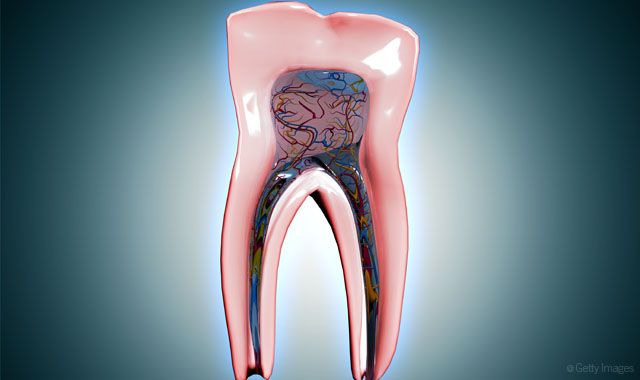Study finds nanodiamonds might prevent tooth loss after root canals
People undergoing root canals may have gained a powerful, if tiny, new ally. Researchers from the UCLA School of Dentistry have found that using nanodiamonds to fortify a material used in the procedure could significantly improve outcomes for patients.

People undergoing root canals may have gained a powerful, if tiny, new ally. Researchers from the UCLA School of Dentistry have found that using nanodiamonds to fortify a material used in the procedure could significantly improve outcomes for patients.
Nanodiamonds are tiny particles formed as byproducts of diamond refining and mining. Thousands of times smaller than the width of a human hair, they have been widely explored for use in dentistry, cancer therapy, imaging and regenerative medicine, among other applications.
Each year, more than 15 million root canal procedures are performed in the United States. During a root canal, inflamed dental pulp is removed and the empty space is then filled in with a polymer called gutta percha, which is used in part because it does not react within the body. But some root canals don’t entirely remove the infection, and residual infection after root canals can lead to tooth loss.
In addition, traditional gutta percha has certain shortcomings, including a limited capacity to ward off infection and less-than-optimal rigidity.
To overcome those issues, the UCLA team developed and tested two types of reinforced gutta percha: One strengthened with nanodiamonds and another strengthened with nanodiamonds that had been pre-loaded with antibiotics.
To evaluate the first type, researchers filled teeth from human patients. Using conventional radiography and micro-computed tomography, or micro-CT, they showed that the nanodiamond-enhanced gutta percha could be used to fill the tooth.
More emerging research: Study finds protein can inhibit bone loss after periodontitis
Like the traditional formulation, the nanodiamond-enhanced compound did leave small gaps in the canal, where harmful bacteria could grow, but the CT imaging showed that the enhanced material filled the space just as effectively as traditional gutta percha.
In the research’s second phase, the scientists tested nanodiamonds that had been loaded with amoxicillin, a broad-spectrum antibiotic used to combat infection. The drug-reinforced nanodiamonds, when combined with the gutta percha, effectively prevented bacteria growth.
During the next two years, the team plans optimize the formulation of the nanodiamond-reinforced gutta percha and begin clinical trials at UCLA.
The research is published in the current issue of the peer-reviewed journal ACS Nano.
This release was taken from materials provided by UCLA. It has been edited for length and content.